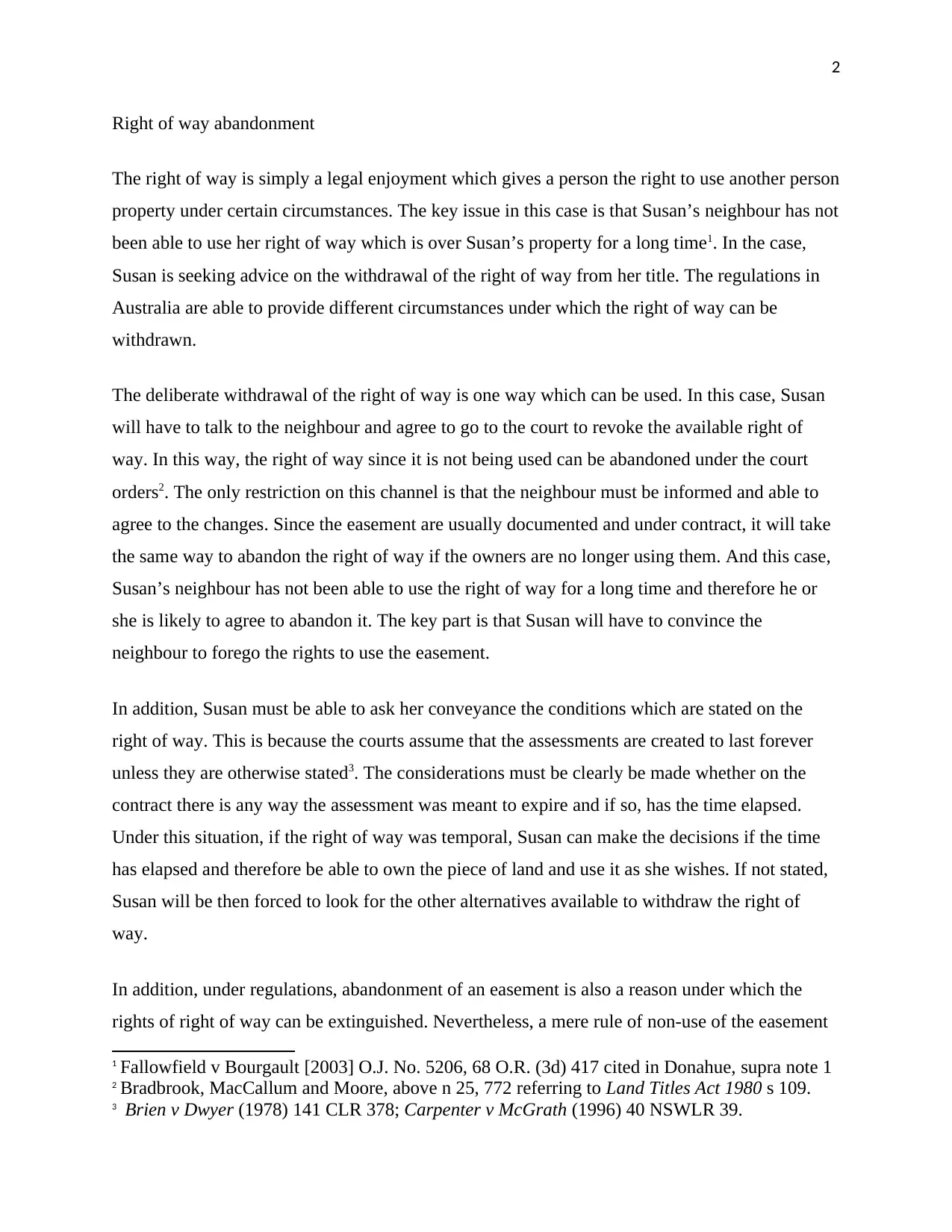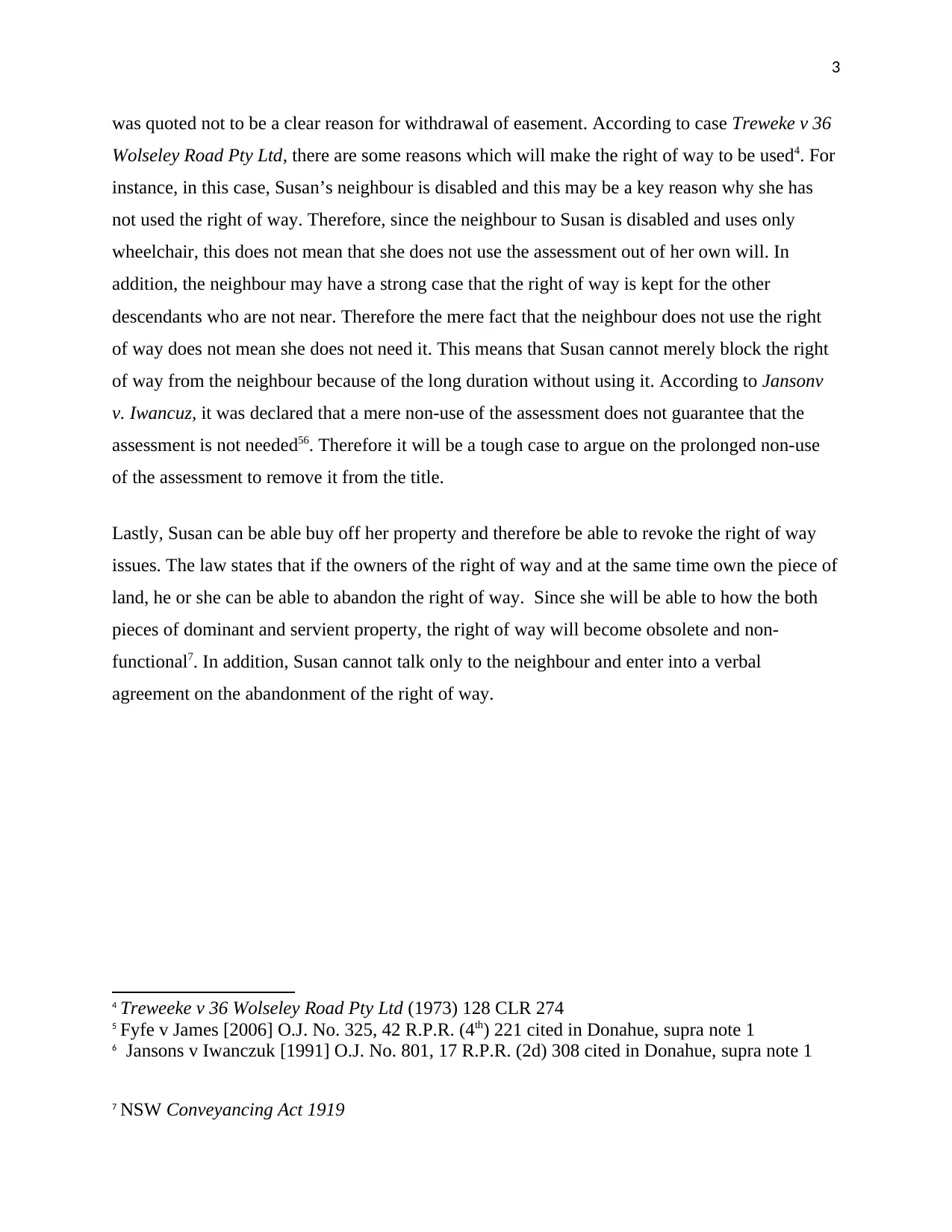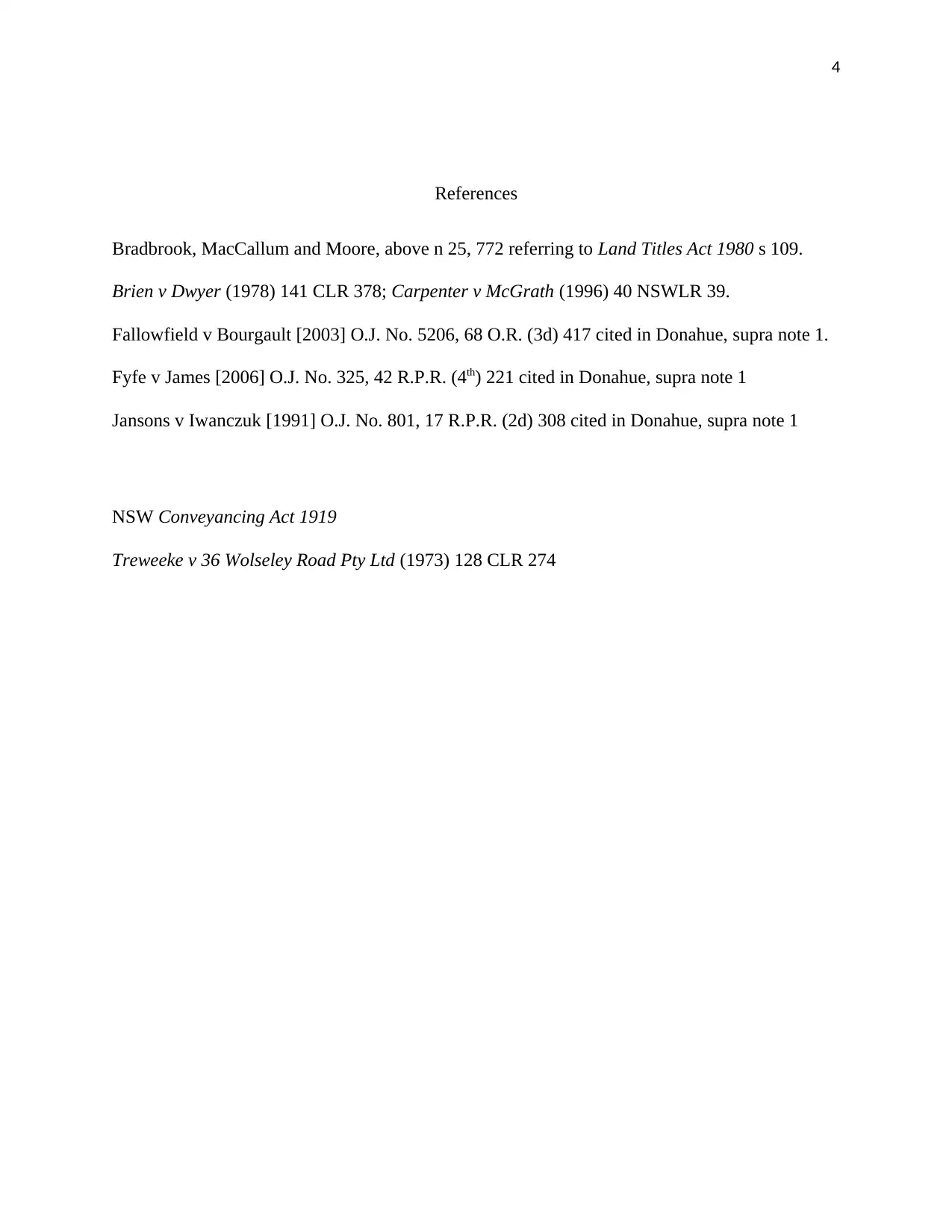Legal Analysis of Right of Way Abandonment and Property Rights
VerifiedAdded on 2020/04/15
|4
|923
|48
Homework Assignment
AI Summary
This assignment analyzes the legal aspects of right of way abandonment, focusing on a scenario where Susan seeks to withdraw a right of way from her property title. The paper examines Australian regulations, outlining methods for abandonment, including direct agreement with the neighbor and court orders. It emphasizes the importance of informing the neighbor and the potential challenges if the neighbor is disabled or has future descendants who may need the easement. The assignment references relevant case law, such as Treweeke v 36 Wolseley Road Pty Ltd and Jansons v Iwanczuk, to highlight the complexities of non-use as a basis for abandonment. It also explores the possibility of Susan purchasing the right of way and the need to review any existing agreements or temporal limitations. The conclusion stresses the importance of a clear legal process for the abandonment of a right of way.
1 out of 4











![[object Object]](/_next/static/media/star-bottom.7253800d.svg)